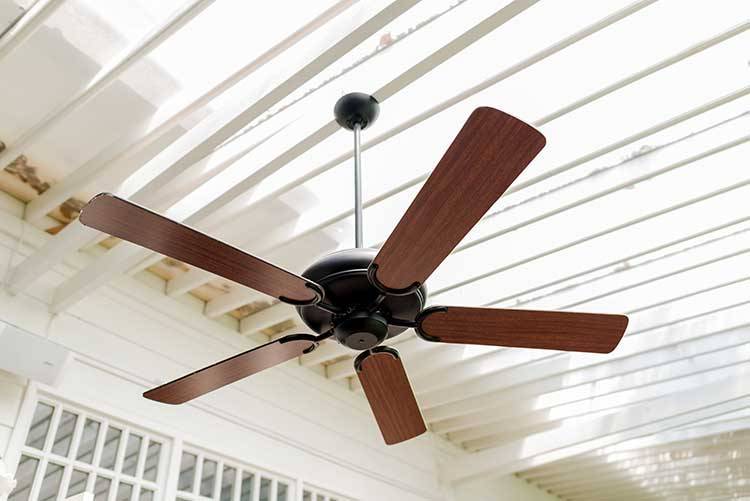Many cats are scared of ceiling fans due to their fast movement and noise, which can trigger their natural prey instincts and cause fear. This behavior is rooted in a cat’s instincts and survival mechanisms, which are not always rational in a domestic setting.
Understanding the reasons behind a cat’s fear of a ceiling fan can help pet owners create a safe and comfortable environment for their feline companions. By gaining insights into feline behavior and addressing their fears, pet owners can help their cats feel more at ease in their home environment.
In the following article, we will delve into the reasons behind this behavior and provide tips on how to help cat owners alleviate their feline’s fear of ceiling fans.
Contents
The Inherent Fear
Cats are inherently sensitive animals, particularly when it comes to sudden changes in their environment. This sensitivity can lead to instinctual reactions to fast-moving objects, such as ceiling fans. The rapid motion of the fan can trigger a sense of fear or unease in felines, rooted in their natural instincts. Cats’ survival instincts cause them to be wary of potential threats, and anything that appears to be approaching them swiftly may trigger a fear response. This innate response to perceived danger may cause a cat to display fearful behavior when encountering a ceiling fan, as they interpret its movement as a potential threat.
Recognizing Signs Of Fear
When a cat is scared, it may exhibit certain behaviors and physical signs. Dilated pupils and flattened ears are common indications of fear in cats. In addition, cats may display hiding behavior and, in some cases, experience involuntary urination when they are feeling fearful or threatened. Understanding these signs can help cat owners identify and address the underlying causes of their pet’s fear, leading to a better quality of life for the cat and a stronger bond between pet and owner.
Overcoming Feline Fear
Understanding feline behavior is crucial for addressing your cat’s fear of a ceiling fan. To help your cat overcome this fear, gradual desensitization methods can be used. This involves exposing the cat to the fan at a distance initially, then slowly increasing proximity over time. Building a safe environment for the cat is also essential, by providing hiding spots and elevated perches. Additionally, creating a calm and reassuring atmosphere in the presence of the ceiling fan can help alleviate the cat’s fear. By understanding your feline’s behavior and taking these steps, you can help your cat feel more at ease around ceiling fans.

Credit: www.animalbehaviorcollege.com
Frequently Asked Questions For Understanding Feline Behavior: Why Is Your Cat Scared Of A Ceiling Fan?
Why Do Some Cats Get Scared Of Ceiling Fans?
Cats perceive ceiling fans as unpredictable objects, causing fear due to their quick movements and noise. Additionally, the swirling motion may create an optical illusion, further inducing anxiety in some felines.
How Can I Help My Cat Overcome Fear Of The Ceiling Fan?
To help your cat cope with the fear, start by creating positive associations. Gradually introduce the fan, using treats and play to foster a sense of security. It’s essential to ensure a calm environment and maintain a reassuring presence during the process.
What Are The Signs That My Cat Is Frightened By The Ceiling Fan?
Signs of fear may include dilated pupils, flattened ears, or hiding when the ceiling fan is in operation. Excessive grooming, increased vocalization, or other unusual behaviors can also indicate distress related to the fan.
Conclusion
It’s natural for cats to be wary of moving objects. Understanding this behavior can help you create a safe environment for your furry friend. By providing reassurance and a calm atmosphere, you can help your cat overcome its fear of the ceiling fan.
Remember, patience and understanding go a long way in building trust with your feline companion.

Katie Lindsey is a passionate cat lover and founder of Cats Solution, a comprehensive resource for all things feline. With a lifelong love for cats and extensive knowledge in their care and behavior, she provides expert advice and solutions to cat owners. Through her website, Katie fosters a supportive community where cat enthusiasts can find guidance and heartwarming stories. A dedicated advocate for animal welfare, Katie also promotes responsible pet ownership and adoption. Join her on this purr-fect journey celebrating the joy of feline companionship.



